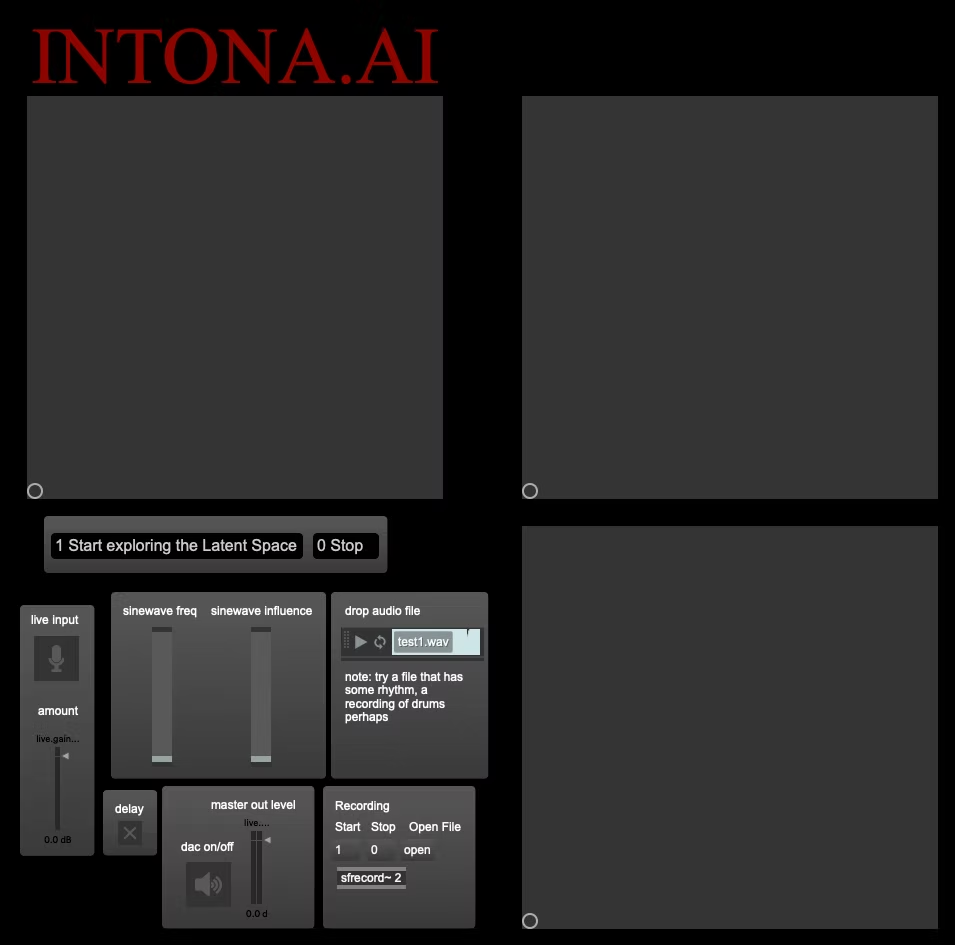Intona.AI is a Machine Learning based musical instrument and sound design tool created by Christopher Lock. Intona was built using RAVE (Realtime Audio Variational Auto-encoder) by Antoine Caillon and Philippe Esling and nn_tilde.
Keywords - AI Based Software Instrument, Small Data, Variational Auto-encoder, Real Time Encoding/Decoding, Max/MSP

The Intona.AI repository can be freely pulled from Github via the following link: https://github.com/Chris-Lock-Music/Intona.AI
A link to the RAVE library repository can be found here: https://github.com/acids-ircam/RAVE
Intona was trained on a database of sounds made up from compositions that Christopher has created over the past 5 years, during his time as part of the Harvard Group For New Music, and partially serves as a kind of living portfolio somewhat representative of his compositional ideas.
Intona is meant to be used in real time as a performance/improvisation instrument or as an on-the-fly sound design tool. When Intona receives input, it attempts to recreate whatever sounds it takes in but with the texture and sound qualities of the training data, i.e. my compositional output from the past 5 years.
Intona has three different modes of input; a sine wave generator causing Intona to produce drones, audio file playback causing Intona to mimic the rhythm, pitch and quality of whatever audio file you choose to drop in, and a live mic input allowing you to sing or play an instrument into Intona.

To set up Intona follow these simple steps:
Step 1: Download RAVE from https://github.com/acids-ircam/RAVE
Step 2: Download nn~ https://github.com/acids-ircam/nn_tilde
Step 3: Make sure these packages are in the packages folder of Max/MSP
Step 4: Unzip the file Models.zip into Documents -> Max 8 -> Packages -> nn_tilde -> externals
Now the patch should be all set to run. For technical help with the patch and to download the trained model reach out to chris.lock.music@gmail.com
Demos of Intona:
healing wounds healings wounds healing wounds healings wounds healing wounds healings wounds healing wounds healings wounds healing wounds healings wounds healing wounds healings wounds healing wounds healings wounds healing wounds healings wounds healing wounds healings wounds